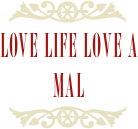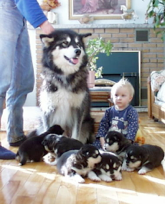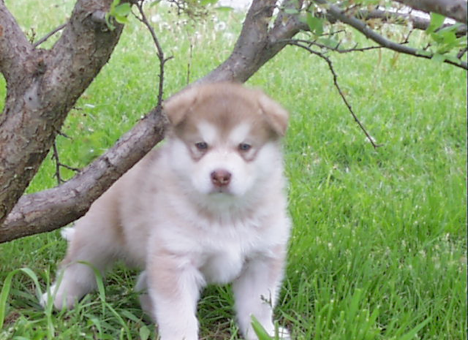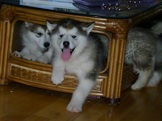Inuit




Inuit are a race of people who live in the arctic regions of the world. These include the Bering Strait to East Greenland which is a distance of 6000 kilometres as well as arctic Canada , Northern Alaska and Greenland. The inuit of our continent also have close relatives in Russia. THese are all united by a common heritage and language. Not long ago the Inuit were also normally called "eskimo" . The name Eskimo was given to them by the Algonquin indians of eastern Canada , the name itself meaning "eaters of raw meat". The name eskimo is not well liked by the people and now prefer to called by their own term "inuit" which has a simple meaning "people". In Canada there are about 40, 000 Inuit residing mainly in the arctic areas of the country. The Arctic remains one of the coldest inclement regions of the world. The land of the Inuit is mostly tundra which is low flatlands that are treeless plains. The ground remains generally permanently frozen except for a few inches in the very short summer season. Some Inuit still live among rivers and along bays and oceans but now normally live in small communities. Hunting today still exists and is part of many Inuits life . Many now have made good use of modern tools ,such as the ski doo. No one really lives in Igloos anymore but in modern homes made of wood like yours and mine . Igloos made be made though when a hunt is on . Many Inuit still go hunting for a week or more at a time . Tents can be used but often times the Igloo makes for the best cover . Clothing was also sewn from skins of animals they hunted and many tools were made from the bones such as bow points and harpoons. These harpoons were made often of the ivory from walruses or the antlers from caribou. Stone blades were also crafted with skill and were used for hunting and carving ,and sled runners were also made from the animals carcass which was often made from frozen strips of meat. Courage and hardiness were taught in the training of young Inuit ,which was necessary in their chances of survival.
What is interesting about the Inuit is that though their area is vast 8000 kilometres {5000 miles} their ways and traditions and cultures are much the same. The are some differences in traditional kinship systems like in language and dialect which is divided into 2 major groups ,the Inupik speakers from ...Greenland to western Alaska ,and the Yupik speakers , southwestern Alaska to Siberia.
The origins of the Inuit according to archaeological research seem to indicate that northern alaska was the starting point. These first people hunted seals ,caribou ,walrus and whales along the seacoast and tundra of the north western state of Alaska.their homes then were mad out of driftwood and sod and likely spoke the earlier version of their language called Inuktitut. These people and their ancestors were the first to perfect the hunting of sea mammals such as the bowhead whale . THese were successful hunts as it provided much food , and other materials for clothing and tools . A small whale could weigh as much as 7 tons . This ensured a very rich life than many of the other people who hunted for food for their survival.
SETTLEMENTS
Settlements depended a lot on many variations ,weather ,environment and time of year and the ability to hunt food in a given area. In Greenland permanent houses of stones existed at one time . This is the eastern fringe of Inuit existence and in Alaska and along the Siberian shore villages these permanent houses were more likely to be made out of driftwood and sod and earth There seems to have been no permanent locations in the central Arctic ,though favourite fishing and hunting grounds were visited year after year , making a somewhat transient lifestyle.
Much of Inuit living took place in cycles where groups spent the winter together in large settlements and then dispersed and spread out into much smaller ,family sized bands during the summer season. In the summer people would leave their permanent communities and live in animal tents at their favourite spots , i guess like a summer home .Here they would have likely chose a place where hunting seal and fish were very good . Eggs and plants were also collected and used for eating . Some plants were dried and stored for winter use. Some of thee plants were berries and tundra herbs . Moss and ground urchin were also sometimes eaten. The famous "igloo" meaning "home" in the Inuit language was constructed of packed snow and used only during the winter months when villages of these structures were built on the ocean ice of the central Arctic to help make easier seal hunting through holes in the sea ice. Such homes were used as temporary dwellings also in Greenland and in some parts of Canada and Alaska.
SUBSISTENCE
A lot of their subsistence depended on the appearance and disappearance of arctic ice. The changing of the seasons dictated where and when they left their settlements homes for better hunting . In the summer more travel took place as the Inuit followed sources of food such as fishing by streams . Spawning streams were netted for large catches or they were speared . As the fall season approached with it's colder weather and winter looming not too far off , the Inuit once again settled in their permanent homes in communities where seal hunting was a major source of food as was whaling. During the summer months small family groups would travel by boat . In the spring caribou was hunted . The inuit would kill the caribou during the caribous during their migration to the north . They would spear them at river crossings .
THe picture we have as southerners is inuit hunting seals on the frozen ice at a holes. Because seals are mammals and need to breath ,they would need to come up for air. This hole in the ice was used to lure seals to their impending death where the hunter would quickly spear the seal as it would come up for air. Sometimes the hunter had to wait for hours in a silent pose. This took much patience since it was likely bitterly cold and miserable out in the open wind or storm.
Some areas of the north do not freeze all over such as in Greenland or western Alaska. Seals and walruses would come up for air where open spaces were between airflows. The hunter would stand at these open water flows and await his chance for a successful kill to feed his family. The method called utoq was primarily used by the more northerly region of the Inuit population.Seals often would come up from the waters to bask in the warm sunshine. Hunters then would trick sometimes place a white shield of skin to blind the seal to it's approach or act in such a way to fool the seal into thinking it was another seal. as soon as they were close enough they would harpoon the seal .{when europeans came they used rifles} Sometimes they also used one of their wonderfully crafted blades if they could get so close as to use one.
CLOTHES AND TRANSPORTATION
Most parts of the animals that were killed by the Inuit were used. Inuit could make clothes from the skins of many animals such as birds ,caribou, seals and sometimes polar bear.Their thread was the sinew of animals . They would stretch it out and use a bone a needle that they crafted for this purpose.With these tools they would make jackets , pants and also waterproof pants. With all this they were almost as warm as the animals that wore them when they were alive.The skins of the animals were also used for tents and boats and the bones were used for weapons such as harpoons , knives and spears.
There were 2 kinds of boats that were used by the Inuit people One was called a uniak. It was large . It was an open boat constructed with a wooden frame and covered in animal skins such as walrus. It was used to transport people and goods alike . This was used a lot in northern parts of Alaska to hunt whales. The other type of boat was the kayak . This was a one man vessel covered in seal skin or caribou skin. The hunter would sit inside the cockpit . They wore a tight fitting waterproof outfit made of seal or walrus intestine. This would equivalent to the modern diving wetsuits we use today . The kayak could silently glide through the waters silently enabling the hunter to get very close to it's prey.
SOCIAL ORGANIZATION
The family structure consisted of a man ,his wife and his children and his married sons and his children. Often several family groups lived together and shared the resources of a given area. Generally the leader of the group was the eldest male who was still capable of hunting. Sometimes quarrels would ensue between the group or outsiders . One way of resolving the argument was to wrestle each other or to join in on a public joking and insulting contest . The winner would be the one who would win this contest.
In Alaska a special house that was called a kashgee was used by the men and their sons to spend the night and eat their meals and work. This was also used a a ceremonial house. The kinship ways of the Inuit resembled much of that of the American society. They would also call the same kind of relatives "cousin. They also recognized the both sides of a family equally. Only in the western part of the Bering Sea was the paternal aspect of descent so much more pronounced that a special clan system based apon this was formed. Every person belonged to the clan of his or her father. In those areas also the term cousin was different from the usual Inuit custom.
The Inuit were very religious. All animals had spirits or souls and so did special places . Human being were said to have several souls . After one died it was believed that the name and personality of it's bearer would go into the body of a newborn infant given the same name. The inuit had elaborate ceremonies to appease the spirits of the animals they would kill . They also had ceremonies of thanksgiving.Later has european and Inuit met Christianity was brought and taught. many converted , many did not and many incorporated a combination of the both . Today there are not many sha -man bit there are some shaman that teach both the Inuit way and christian beliefs . Pastors of Christian faith are now part of Inuit society and have a respected place in most of the Inuit communities.
The inuit were great artist not only in carving of wood and stones but they excelled in the art of sewing . They make beautiful coats and clothing that show off this skill very well. THey are great story tellers ,incorporating dance and song in most of their stories making for a wonderful way to spend a night at home surrounded by family and friends.
THE MEETING OF VIKINGS
The Inuit likely first encountered the vikings {known also as Norse} around the year 1250 ad after they entered Greenland through the Smith Sound .Colonies had of Norse communities had been set up by Eric the Red. Soon around the 1400 the Norse colonies had disappeared .No one really knows why but climate change was one reason . The weather had started to change to a colder climate . At one time it was said that vikings had grape vines growing in that area and grew some vegetables in the short season . With a colder climate change no longer were these things possible and likely moved to warmer destinations. Also competition with the Inuit for hunting grounds may have played a part as the inuit were better adapted to arctic life.
By the 1600 when later european explorations took place ,the Inuit had sole possession of the whole of the North American Arctic.
As discussed above concerning the warmer climates ,it also proved to be a strain on the Inuit economy. The then colder climate between the 1300 AD and the 1500 AD was known as the "little Ice Age" . Where once rich and important whaling stations once existed and provided a way of living , disappeared as more open waters were frozen into ice . The people then moved south . Whaling was no longer the focus of Inuit life except for in Alaska. Life was harder and more hunting trips were needed to provide the necessary food staples for survival . One caught whale could provide food for many months and for an entire community. With whaling gone it was necessary to hunt often and almost daily . People moved more and often and in many spots ,the old time house of sod and whalebone was left abandoned . This is then that the well known Igloo was adopted . THese types of homes were easier built and they could be put up in a relatively short time ( few hours) as opposed to days which was required of more permanent type homes.
Meeting Europeans explorers brought many changes. Most of these Explorers such as Martin Frobisher were all looking for a "Northwest Passage" from the Atlantic to the Pacific. One was never really established . Ice and cold prevented anything really viable. The Europeans brought with them gifts that were generally traded for furs and the like. Many of these gifts were iron to make tools such as harpoons and knives. As time would go by more and more modern were being adopted by the Inuit. Along with the gifts of manufactured goods that were brought , the Europeans also brought with them disease that the inuit had no immunity over. Thousands died . Back in 1850 in the Canadian Arctic in a place called Inuvialuit , it was estimated that around 2500 people lost their lives .In 1902 one group called the Sadlirmiut of Southhampton Island totally disappeared ,they had succumbed to dysentry which was passed on by sailors on the Scottish ship "Active".
A little more on the Whalers here. It was around 1850 that Europeans and Americans began to commercialize the arctics wonderful abundance of animals . They eventually set up very large commercial whaling stations what is now the Canadian waters. These were large operator from Britain and England trying to make a profit . Here they killed thousands of whales . They also hired Inuit to work their ships as hunters and seamstresses. It was then where the biggest cache or European goods entered the Inuit society . Aside from the rifles that were already mentioned, boats , canvas and flour were also now being used by the Inuit. By 1915 the whaling industry was coming to a close as arctic stocks dwindled and almost became non existent . It does not take man long to destroy does it. With the whaling gone another trade started to flourish ,propelled by the Hudson Bay Company , it was the fur trade. It became very commercial and another way of life was again embraced and taken up by the Inuit. With the fur trade though came another change in Inuit society , The Royal Mounted Canadian Police and the Anglican Church and Roman Church . Fur Trading now encompassed all of the Arctic North. Around the year 1925 the Inuit became part of the Canadian body here in Canada . They were now considered part of the canadian state yet not quite citizens. It is around then that the Inuit lost power of their own lives . Many lost their way of life and traditions and teachings of skill diminished leaving many new generations without the skill to survive . Many slipped into poverty and despair because of the depreciating prices of furs.
THE INUIT TODAY
Around the end of World War 2, the government became more involved in the Inuit life. THis was due to the fact that it had been reported that theInuit were suffering widespread starvation. It seemed logical to the government then to encourage the people to give up their nomadic life and live in permanent settlements that the government set up. THis seemed to be the best solution to ease the suffering of the people in the people, it being the easiest and most affordable at the time.
By the mid 1960's most iInuit were now living in Government made communities. THese communities now had schools ,medical facilities,cheap housing ,airports and also modern stores. Where once a population was widespread it was now mostly centered around a number of few small communities. This was not to be the best solution. Because of the lack of job opportunities , the Inuit became more and more dependant on government assistance . With their way of life now gone many could no longer hunt for themselves ,lacking the skills of their ancestors. Many Inuit then lost who they were and many succumbed to addictions .
Not until 1970 did arctic territorial government become elected in the Northwest Territories here in Canada.Also in 1971 the founding of the Inuit Brotherhood called the Taprisat Of Canada was formed. The goal in creating such a brotherhood was was to push the idea of a new territory called Nunavut which means "our land" This new territory would be made up of much of the central and eastern parts of the Northwest Territories. and it would represent the majority of the Inuit population. The Nunavut proposal also included a a comprehensive land claim. In 1991 the agreement was finally signed and a new territory was formed for the peoples. The Inuit living outside of Nunavut have chosen some different paths . Concerning the Inuvialuit these were people who live along the Arctic coast in the Western Northwest Territories , have always felt different and distinct from the eastern Inuit.These people had access to much riches such as the oil and gas reserves of the Beaufort Sea. THey wanted to make up their own land claim and so they did under the "Committee for the original Peoples" IN 1984 the land claim was signed and an establishment called the Inuvialuit Settlement region was created making up most of the western Arctic.
Also in 1975 another claim had been signed by the Northern Quebec Inuit . THey signed what was called the James Bay and Northern Quebec Agreement . This established land ownership and other rights in the Arctic of Quebec. Both Northern Quebec and Inuvialuit agreements are very comprehensive land claims only. They are not as broad as they do not establish a public territorial government.
THE FUTURE
The Inuit have made great political gains in this century . THey have given themselves more power through their collective voices . However great fundamental difficulties are still in existence. Job creation and education are still a problem . Many Inuit Still lack the educational skills in todays technical global economy. Many are looking at tourism as a source of income for the future but even that is a partial solution. Mining is now also becoming a growing sector of the economy . Rich reserves of gas in the Beaufort Sea have encouraged ideas of mankind a western pipeline that may "fuel" economic growth. In Nunavut however ,gold and diamonds mines and other heavy metals offer opportunities of employment as well as revenues. But with mining comes heavy metal pollution and environmental destruction that pipe line also would cause.
The Inuit of today are a strong and vibrant people with a growing population and have a long history of overcoming hard and what may seem almost impossible obstacles. They as a people want to work hard to preserve their culture and traditions and at the same time build a strong Inuit community who is also economically prosperous for themselves and the next generations to come. Being the hardy people that they are it is no doubt that they will achieve their goals!!


The inuit







